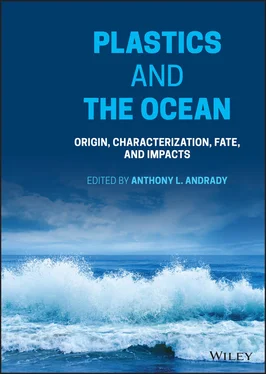Plastics and the Ocean
Здесь есть возможность читать онлайн «Plastics and the Ocean» — ознакомительный отрывок электронной книги совершенно бесплатно, а после прочтения отрывка купить полную версию. В некоторых случаях можно слушать аудио, скачать через торрент в формате fb2 и присутствует краткое содержание. Жанр: unrecognised, на английском языке. Описание произведения, (предисловие) а так же отзывы посетителей доступны на портале библиотеки ЛибКат.
- Название:Plastics and the Ocean
- Автор:
- Жанр:
- Год:неизвестен
- ISBN:нет данных
- Рейтинг книги:5 / 5. Голосов: 1
-
Избранное:Добавить в избранное
- Отзывы:
-
Ваша оценка:
- 100
- 1
- 2
- 3
- 4
- 5
Plastics and the Ocean: краткое содержание, описание и аннотация
Предлагаем к чтению аннотацию, описание, краткое содержание или предисловие (зависит от того, что написал сам автор книги «Plastics and the Ocean»). Если вы не нашли необходимую информацию о книге — напишите в комментариях, мы постараемся отыскать её.
Plastics and the Ocean
Plastics and the Ocean
Plastics and the Ocean — читать онлайн ознакомительный отрывок
Ниже представлен текст книги, разбитый по страницам. Система сохранения места последней прочитанной страницы, позволяет с удобством читать онлайн бесплатно книгу «Plastics and the Ocean», без необходимости каждый раз заново искать на чём Вы остановились. Поставьте закладку, и сможете в любой момент перейти на страницу, на которой закончили чтение.
Интервал:
Закладка:
1.4 Sustainability of Plastics
The notion of environmental sustainability is a complex one (well outside the scope of this chapter) and according to its original definition, refers to a mode of development that “meets the needs of the present generation without compromising the ability of future generations to meet their own needs.” It is a laudable, qualitative statement, but the strategy to achieve this objective is not clear, especially where development involves depleting a fixed reserve of a natural resource such as rare earth elements or oil. Not only is the number of future generations not specified, but they are also assumed to have the same set of needs as the present generation does. A tempting approach is to “decouple” growth in GDP from environmental impacts (Luo et al. 2019), allowing sustainable development to proceed unhindered. This, however, is not realistic (Ward et al. 2016), especially in the future plastics industry.
But what can be realistically implemented to improve the sustainability of plastics in the near or medium term? The goal should be to ensure that the rapidly depleting resource base for resin production lasts long enough for technological advances to perhaps make those resources obsolete by discovering substitutes. Finding ways to minimize the environmental impact of plastics, given the future increase in production levels, is also critical to ensure sustainability. Specifically, three strategies towards sustainability deserve close attention.
1 Energy economy: Plastic resin manufacture and processing into consumer products needs to be more energy‐efficient and, wherever possible, rely on renewable energy instead of conventional fossil‐fuel derived energy. Innovations to capture process waste energy such as low‐grade heat for reuse needs to be enabled.
2 Feedstock economy: Using the minimum amount of plastic materials to deliver the necessary functionality for the performance of the product, needs to be implemented. Conserving fossil‐fuel feedstock by material recycling (as well as chemical or energy recycling) of post‐use plastics and where feasible, by substituting bio‐based plastics in place of fossil‐fuel‐derived resins should be incentivized.
3 Minimizing toxicity: Minimizing the release of toxic chemical by‐products from resin production, processing, use, and waste disposal of plastics especially into the ocean environment, is a priority. This requires urgently substituting some of the toxic legacy additives with known adverse ecological impacts, with non‐toxic alternatives. Also, capturing CO2 and process gaseous emissions for conversion into useful products to reduce the environmental footprint of the material should be encouraged.
In 2020 with the COVID‐19 pandemic slowing down economic activity, the energy demand also decreased, with that for oil and coal dropping by 7–8% each, accompanied by a consequent decrease in the global carbon emissions. Despite this respite, the world energy demand is still expected to grow by nearly 50% by 2050 to reach 240 Quads (quadrillion BTU; EIA 2020), led primarily by industrial growth in Asia. While more renewable energy will be available in the future, their percent contribution to the overall energy supply will still be only about 16%, as opposed to the present 11%. Therefore, conserving energy, along with using more renewable energy and improving efficiency in plastic processing (for instance, with all‐electric molding technology) will be important in making plastics more sustainable in the future.
Moves to encourage economy in using energy and material, conveniently align well with good business practices, and should therefore be driven to some extent by future market competitiveness. There are many examples, such as the down‐gauging of plastics film or improved plastic bottles; with the 0.5L PET soda bottle, a 48% decrease in weight was achieved over the last decade, without compromising neither the functionality nor consumer appeal, saving valuable resin material resources. Similarly, reductions in secondary packaging of goods with minimal impact on the level of protection afforded by the package, have contributed to conserving material.
Two major strategies that conserve valuable fossil‐fuel resources and reduce the embedded environmental impacts are worth emphasizing: (i) extending the service life of plastic products; and (ii) increasing the use of bio‐based plastics, reducing the dependence on fossil fuel in manufacture.
1.4.1 Recycling of Post‐Use Plastics
Material recycling saves the energy expended for producing consumer plastic goods because it is the resin production (extraction, refining, and polymerization into resin) step, as opposed to the processing step, that has the higher embodied energy, EE (Schyns and Shaver 2020). Especially with single‐use products such as plastic cups, straws, or bags, the item is used only for a short duration and the quality of the plastic resin is barely affected by use. Being thermoplastic materials, the post‐use products can be collected and re‐melted for use in another generation of products. With most of the EE and embodied impacts associated with the manufacturing phase avoided, the strategy yields significant advantages (see Table 1.2). As seen from the table, savings in energy and in carbon emissions associated with recycling are substantial for plastics generally met with in the marine environment.
Even the leading type of plastic to be recycled in the US, PET bottles, are only recycled at a rate of ~28% presently. Even with bottles, the common use of the recyclate (r‐PET) resin is to “downcycle” into other products ( products of lower market value relative to the original high‐value bottle.) Alternatively, the r‐PET may be mixed with virgin PET (or used as a layer in multi‐layer extrusions) in fabricating original high‐value products. For instance, PET resin from plastic soda bottles might be downycled into textile or carpet fiber (Leonas 2017) and then downcycled again (mixed with other plastics) into lower value “plastic lumber” (Wan et al. 2019). Downcycling, however, is not the only recycling option available, as illustrated by the bottle‐to‐bottle recycling of PET, consistent with the paradigm of “circular economy.” To be sustainable, however, the US plastic industry also must join the ranks of high‐recyclers of the Word such as Norway, Sweden and South Korea, to recycle much higher fractions of at least the post‐consumer PET and HDPE, and encourage the recycling of other plastic resins as well.
Table 1.2 Comparison of the embodied energy (GJ/kg) and carbon footprint (kgCO 2‐e) for virgin and recycled resin.
Based on data from Ashby (2013).
| Plastic | Embodied energy Virgin (GJ/kg) | Embodied energy Recycled (GJ/kg) | Carbon footprint Virgin (kgCO 2‐e /kg) | Carbon footprint Recycled (kgCO 2‐e /kg) |
|---|---|---|---|---|
| Polyethylene | 77–85 | 45–55 | 2.6–2.9 | 2.7–3.0 |
| Polypropylene | 75–83 | 45–55 | 2.9–3.2 | 2.0–2.2 |
| Polyester (PET) | 81–89 | 35–43 | 5.7–4.1 | 2.1–2.6 |
| Polystyrene | 92–102 | 43–52 | 3.6–4.0 | 2.6–3.1 |
| Poly(vinyl chloride) | 56–62 | 32–40 | 2.4–2.6 | 1.9–2.4 |
| Nylon 6 | 116–129 | 38–47 | 7.6–8.3 | 2.3–2.8 |
| Poly(lactic acid) | 49–54 | 3.4–3.8 | 3.4–3.8 | 2.9–2.4 |
Low recycling rates in the US and elsewhere often result from the lack of readily‐accessible recycling infrastructure at the local level and the minimal market cost differential between virgin and recycled resin. Also, it is not always practical to mechanically recycle a mixed stream of plastic waste. For example, producing high‐quality recyclate is simply not possible with blends or multi‐layer laminated plastic products (Kaiser et al. 2018) or with products that are rendered photodegradable or enhanced biodegradable (a 0.5 wt% of biodegradable PLA contaminating a PET recycling stream discolors the rPET) (Alaerts et al. 2018). Some of waste plastics, however, may be amenable to recycling into chemical feedstock and energy via either pyrolysis or incineration. Recycling of waste fishing gear into plastic resin pellets, and their conversion to energy by incineration, are practiced at a small scale in the US, but much progress needs to be made.
Читать дальшеИнтервал:
Закладка:
Похожие книги на «Plastics and the Ocean»
Представляем Вашему вниманию похожие книги на «Plastics and the Ocean» списком для выбора. Мы отобрали схожую по названию и смыслу литературу в надежде предоставить читателям больше вариантов отыскать новые, интересные, ещё непрочитанные произведения.
Обсуждение, отзывы о книге «Plastics and the Ocean» и просто собственные мнения читателей. Оставьте ваши комментарии, напишите, что Вы думаете о произведении, его смысле или главных героях. Укажите что конкретно понравилось, а что нет, и почему Вы так считаете.












